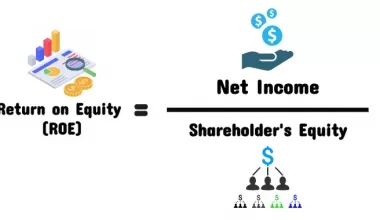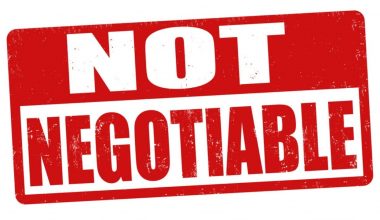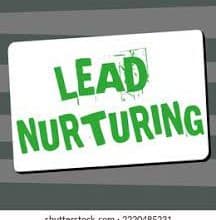A job analysis is an effective method for determining the responsibilities and needs of a position. When establishing a role at a firm or employing new personnel, employees, managers, and human resources specialists may do a job analysis using a proven process. A huge amount of data and information must be collected and analyzed during the process. In this piece, we will discuss safe job analysis and methods.
What Is a Job Analysis?
A job analysis is a process of identifying the duties, responsibilities, skills, objectives, and work environment for a certain position. It’s commonly used for creating the perfect job description, but it covers so much more. When recruiting is done correctly, it helps your employees transition into their new career and supports their long-term growth.
In today’s business culture, we must broaden the definition of a job analysis. It now incorporates expectations, goals, skills and competencies, onboarding requirements, performance review information, and anything else needed to educate an employee to attain position mastery. When done correctly, this degree of detail in a job posting can increase the number of applications you receive due to its transparency. Managers, colleagues, and leadership can then rely on the same excellent work for different goals. So, instead of using it for a job description, let’s redefine it to explain how a role brings value to a team and organization.
Why Is Conducting a Job Analysis Essential?
This includes information on the role, expectations, competencies, onboarding plans, day-to-day tasks, and other similar elements (rather than just a job description), your business can use the information for initiatives such as:
- Recruitment
- Selection
- Onboarding
- Training
- Advancement of one’s career
- Health and security
- Compliance
- Endurance
- Termination
- Offboarding
- And even more!
One benefit of designing a job analysis with this degree of depth is that it improves your candidate’s understanding of how to offer value to the company and whether they are qualified to do so. This will aid in the qualification of candidates and then flow immediately into their onboarding experience, where managers can review objectives and tasks and create precise 30-60-90 day goals. This also serves as the foundation for their productivity evaluations and how they can meet the requirements of the role.
Setting clear expectations during the onboarding phase adds value to the off-boarding job analysis process. If management does a good job of creating clear expectations for the post, and the candidate fails to meet those standards, it should come as no surprise that it did not work out. By including this information in a complete job analysis, evaluating it ahead of time, and then checking in against the same expectations, both parties will have a clear knowledge of where the needs were not satisfied, resulting in a more amicable departure.
Job Analysis Process
The following is the step-by-step job analysis process you need to consider.
#1. Determine the Purpose of Conducting Job Analysis
The purpose should be linked to the success and strategic goals of the organization. A prominent reason for doing employment analysis efforts is that jobs are much more dynamic than they have ever been. Technology and the demands of a competitive economy frequently modify the nature of the profession, forcing reevaluation. Rapid organizational growth frequently involves the establishment of new types of employment, which requires the development of job descriptions. High turnover or low job satisfaction could also be signs of the need for job analysis activities.
A high turnover rate may indicate that employees are underpriced in contrast to the outside employment market. Prior job analysis findings may need to be altered because compensation decisions are dependent on job analysis. Boring or repetitive employment sometimes causes low job satisfaction. Job analysis can assist you in developing new strategies for designing more interesting and demanding work.
#2. Identify the Jobs to Be Analyzed
After determining the purpose, it is possible to determine we will consider which jobs in the job analysis. On the other hand, time and financial restrictions typically limit the total number of jobs that can be incorporated into the process. For example, if the organization has a high turnover rate, we should evaluate the data to discover which divisions are experiencing the most difficulties. This study determines the project’s direction. The same holds true if the company is just expanding or changing substantially in a few locations. These are the jobs that lend themselves well to job analysis.
#3. Review Relevant Background Data
Successful job analyses frequently use previously completed work and new data. Examining existing job descriptions and organizational charts will provide you with the necessary core knowledge to begin working on the project. Job analysis aids in comprehending the job’s responsibilities and where they fit into the larger work process.
#4. Plan and Execute the Job Analysis Project
A successful venture requires careful planning. It is necessary to design a program action plan including project tasks and deadlines, as well as the most effective job analysis methods of data collection.
#5. Write the Job Description and Job Specifications
Once the data has been gathered and processed, textual labor outputs, job descriptions, and job specifications must be created. Before these documents are finished, a representative sampling of affected workers and their managers should evaluate them. If any changes to the documentation are required, they may be made and the relevant final approvals obtained.
#6. Periodic Review
It is appropriate HR practice to conduct a methodical periodic review of job descriptions and job specifications. Many businesses use a rotational approach in which we examine an element of the organization each year and review the entire business every three, four, or five years.
To ensure that the job descriptions and job specifications are accurate throughout the assessment, it is necessary to have supervisors from the organization sector that is being on hand. If supervisors identify that job descriptions are out of date, they include those descriptions in the job analysis assessment. It also provided a random sample of jobs for inspection.
Safe Job Analysis
The Safe Job Analysis (SJA) is utilized in many various industries, but it is most well-known in the oil and gas business and the constructions industry. The technique for an SJA is frequently identical, although the scope of the SJA may differ depending on a particular industry.
A safe job analysis is a method of systematically reviewing a work task or activity by breaking it down into smaller sub-tasks and reviewing each one to assess the risk associated with it. This allows for the use of strategies to decrease or eliminate the risk connected with each sub-task.
A safe job analysis is not meant to replace the requirement for HSE risk evaluations and risk and exposure analysis (RVA, also known as ROS), but rather to enhance them in circumstances when existing risk evaluations do not cover a given work job or activity.
We might think of a safe job analysis of pausing and reflecting before performing a potentially hazardous work task or activity. By splitting the job task or activity into smaller sub-tasks, you may examine the work you’re doing in greater depth and identify potential dangers. This allows you to implement preventative actions prior to the work task/activity.
Methods of Job Analysis
The following are the numerous methods of job analysis:
#1. Observation Method
Three methods of job analysis are observation-based. These are- Direct Observation; Work Method Analysis, including time and motion studies and micro-motion analysis; and critical incident method.
#2. Interview Method
Discussions take place between job analysts and job occupants or specialists. In addition, someone frequently supplemented single and team employee interviews with material from managers of employees whose activities are to be analyzed.
#3. Daily Method
It is necessary for job holders to meticulously record their daily activities.
#4. Technical Conference Method
With the help of a supervisors’ conference, this strategy employs the services of supervisors who have a comprehensive understanding of a work. The analyst starts the conversation, which provides information about the job.
#5. Functional Job Analysis (JFA)
It is a strategy for documenting job content that employs precise terminology and a systematic job analysis “schedule.” It is particularly beneficial to the recruitment and selection functions.
#6. Questionnaire Method
Under methods of job analysis, this talks about when employees can complete these individually or by job analysts for a group of employees.
#7. Job Inventories or Checklists
These are questionnaire surveys that ask respondents to check or rate the behavior and/or worker characteristics required for a specific field of work. Furthermore, task- or Qualifications/Worker-Oriented job inventories are available.
#8. Job Performance Method
In this method, the job analyst actually does the job in question, gaining firsthand knowledge about contextual aspects of the job such as physical risks, social demands, emotional demands, and mental needs.
How Exactly Do I Analyze a Job?
There are six steps involved in doing a successful job analysis. This comprises:
- reviewing the duties of each staff
- investigating related industry roles
- defining and enumerating the results required for the position
- Finding the appropriate education, training, and skills
- defining pay and any benefits that may be provided
- modifying and enhancing the job analyses for each role throughout the time
Purposes of Job Analysis
In this section, we will discuss the purse of job analysis in a detailed form.
#1. Job descriptions
A job description is a written statement that describes the jobholder’s activities and how they should be carried out. It accurately depicts the job content, environment, and employment conditions. In general, job descriptions follow a standard format that contains the job title, functions that must be performed during the employment time, certain defining characteristics of the position, and the jobholder’s authority and responsibilities. A job description is a valuable resource for recruitment, selection, and evaluation. During the recruitment process, the job description describes the job to the possible candidate. When an organization hires someone, a job description helps the employee understand what the organization expects of him or her.
#2. Job Specifications
A job specification specifies the minimum acceptable qualifications that a potential candidate must possess in order to execute a job. Job analysis and job specification information identify the skills, knowledge, and abilities required to perform a job. It is crucial during the choice process.
It enables the selector to assess the possible candidate’s skills, knowledge, and abilities and evaluate whether or not the candidate is qualified to execute the job. A candidate who has a personal trait in the job requirements will perform better than a candidate who is lacking these attributes.
#3. Job Evaluations
Job analysis also provides data for comparing current job performance to expected job performance. In order to effectively manage salaries, regular performance reviews of employees are required. It distinguishes and provides information for comparing two or more jobs of the same type. Job analysis gives fundamental job information.
Then, job evaluation evaluates the performance of employees in similar jobs. If someone is unable to meet the level of expectation set for a position, they will be paid less than those who can meet the organization’s expectations.
Job Analysis Example
This example will guide you when creating a jobs analysis.
- Job title: Central Region Sales Representative
- Employee classification: full-time
- Manufacturing Division
- Louisville, Kentucky is the location.
- Level III, base and commission pay
Job Requirements
Summary of duties: Identifies and promotes new customers who are a good fit for the company’s engineering material. Creates and implements a sales process that includes reaching out to potential consumers, following up on new and current clients, presenting items, and closing deals. Maintains digital records of all customer interactions and sales figures. Produces reports and forecasts sales. We must meet annual sales targets.
Job Duties
- Find new customers located in the central region
- Create client lists
- Make contact with potential customers.
- Follow up with current and potential consumers on a frequent basis.
- Deliver sales presentations
- I should visit prospective clients.
- Increase your sales.
- Keep track of sales reports.
What Exactly is the Point of Conducting a Job Analysis?
A summary of the tasks, responsibilities, and activities required for a certain job is referred to as a “job analysis.” A precise job analysis is essential for determining the right remuneration and benefits for each post, as well as for recruiting top talent, training current employees, outlining the path to career promotion, and establishing the path toward career advancement.
What are the 3 Components of Job Analysis?
Work activities, worker qualities, and the work surroundings are the three basic categories of data that are used in job analysis. In this post, we shall concentrate almost entirely on actions related to working. Along with the culture of the organization, the actions of the job serve as the foundation upon which the characteristics of the workers are based.
What are the Challenges of Job Analysis?
There are a variety of additional issues that may arise during the job analysis process. Some of these issues include a lack of adequate time and resources, distortion from the person currently performing the job, a breakdown in communication, the use of inappropriate questionnaires and other forms, a lack of verification and review of the job analysis process, and an absence of reward or recognition for providing relevant information.
FAQs
Who conducts a job analysis?
The Human Resources department of the company or a trained Job Analyst/Consultant can do a Job Analysis.
What are the 3 components of job analysis?
They are: work activities, worker attributes, and the work context.
Who created job analysis?
In the early 20th century, Frederick Winslow Taylor and Lillian Moller Gilbreth, who were two of the founders of I-O psychology, also came up with the idea of job analysis.
{
“@context”: “https://schema.org”,
“@type”: “FAQPage”,
“mainEntity”: [
{
“@type”: “Question”,
“name”: “Who conducts a job analysis?”,
“acceptedAnswer”: {
“@type”: “Answer”,
“text”: “
The Human Resources department of the company or a trained Job Analyst/Consultant can do a Job Analysis.
“
}
}
, {
“@type”: “Question”,
“name”: “What are the 3 components of job analysis?”,
“acceptedAnswer”: {
“@type”: “Answer”,
“text”: “
They are: work activities, worker attributes, and the work context.
“
}
}
, {
“@type”: “Question”,
“name”: “Who created job analysis?”,
“acceptedAnswer”: {
“@type”: “Answer”,
“text”: “
In the early 20th century, Frederick Winslow Taylor and Lillian Moller Gilbreth, who were two of the founders of I-O psychology, also came up with the idea of job analysis.
“
}
}
]
}






